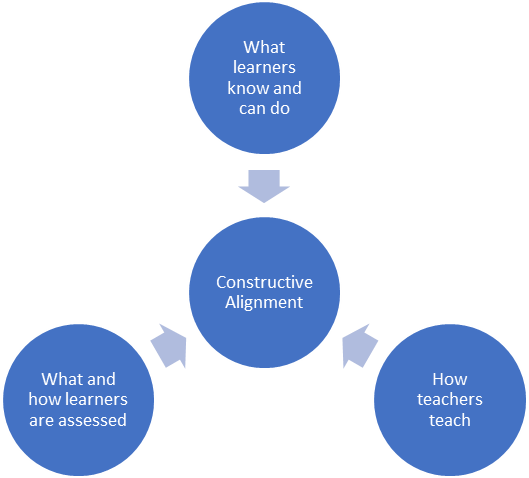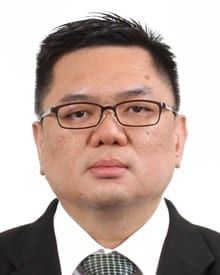By WONG Yao Hing
Lee Kuan Yew School of Public Policy (LKYSPP)
Yao Hing takes us through the lessons he and his colleagues learnt from participating in a Learning Community to explore issues related to teaching pre-employment training (PET) students and continuing education and training (CET) students in the same classroom.

Wong Y. H. (2022, Feb 16). Promoting lifelong learning through continuing education and training (CET) provisions. Teaching Connections. https://blog.nus.edu.sg/teachingconnections/2022/02/16/promoting-lifelong-learning-through-continuing-education-and-training-cet-provisions/
SkillsFuture was introduced in 2015 (SkillsFuture, 2022) to provide opportunities for Singaporeans to re-skill and upskill themselves through continuing education and training (CET). In AY2020/21, a group of academic and administrative staff whose work include teaching or administering CET courses at the National University of Singapore (NUS) formed a Learning Community (LC)1 to explore CET-related issues in institutes of higher learning (IHLs) such as NUS. Our objects of study include two CET models currently practiced at NUS:
- Courses exclusively designed for and attended by CET participants2; and,
- Micro-courses where CET participants enroll in the same courses and attempt identical assessments as full-time NUS students3.
Our LC explored these issues via informal discussions with colleagues teaching the CET courses and through reflective journal entries (see Appendices A and B for samples). In this blog entry, I attempt to reflect on three lessons that our LC has learnt.
Lesson 1: Ensure Constructive Alignment
Constructive alignment (Figure 1) is defined as the “congruence between what the teacher intends learners to be able to do, know or understand, how they teach, and what and how they assess” (Fry et al., 2009, p. 8).
In any teaching and learning situation, ensuring constructive alignment is important so that:
- Actual learning takes place;
- Effective teaching is present; and,
- Assessments to measure student learning are valid.
In a mixed PET-CET classroom, where learners bring in diverse prior knowledge and experience, inclusive student engagement with their learning can be achieved through developing a constructively aligned curriculum. Race (2015) notes that constructive alignment refers not just to classroom teaching, but includes intentional thinking on curriculum design, teaching strategies, and assessment (p. 67).
Instructors may be encouraged, empowered and supported to explore “out-of-the-box” teaching strategies and assessment methods. The Inequality Walk4—a curated walking tour aimed at furthering discussions on aspects of policymaking—is one such example of an innovative teaching activity.

Lesson 2: Promote Student Motivation Using Case Studies
PET and CET students enrol in a course/module for different reasons. The issue of student motivation may be addressed in part through constructive curriculum alignment. In a mixed PET-CET classroom, it is important that neither group feels disengaged. An inclusive learning experience, then, may be achieved through constructive alignment, where teaching and learning activities are carefully curated to ensure relevance, and assessments provide meaningful feedback on learning. Students’ varying life circumstances should also be taken into consideration (Finsden & Carvalho, 2007) while maintaining academic rigour. The use of case studies in classroom teaching and assessment should be encouraged: case studies present authentic, real-life scenarios that show the relevancy of classroom teaching content with the workplace, and are academically rigorous. From our LC members’ classroom observations and conversations with colleagues who have taught CET modules (see Appendix A for the questions)—both in a homogenous CET classroom setting or in a mixed PET-CET classroom setting—case studies appear to be ideal teaching and assessment materials.
One possible teaching enhancement to the case study method is to consider inviting the protagonist(s) to the classroom, either in-person or virtually. Students may feel greater motivation when the learning becomes “more real.”
Lesson 3: Rethink the Meaning of Lifelong Learning
In their article, Sung and Freebody (2017) propose the Delors “Four Pillar” framework in thinking about the meaning of lifelong learning (Figure 2):

According to Sung and Freebody (2017), the utilitarian factor remains a dominant element in lifelong learning in Singapore, in contrast to the Western world’s perspective, where “the economic imperative of adult education soon gave way to wider societal concerns” (Sung & Freebody, 2017, p. 617). Singapore, according to Sung and Freebody (2017), excel in the dimensions of learning to know and learning to do, but needs to improve in the dimensions of learning to live together and learning to be.
Our LC discussed this and did not arrive at any easy answers for how this lesson may be readily applied. Lifelong learning in Singapore may or may not follow the trajectories of those of other Western societies.
Implications for Policymakers and Institutes of Higher Learning such as NUS
First, as Sung and Freebody (2017) emphasised in their article, there is a need for policymakers to develop a mechanism that effectively measures, monitors and evaluates the progress made in promoting lifelong learning, that views lifelong learning more holistically beyond knowledge and skill mastery.
Second, for IHLs such as NUS that participate in PET and CET education, it is crucial that these universities provide a conducive environment that promotes lifelong learning. In a 2021 Straits Times opinion piece (A degree in learning to be human, 2021), NUS President Professor Tan Eng Chye stressed that universities ought to “focus on preparing our students, not just for the future of work, but for a future that we cannot today foresee or predict.”
 |
WONG Yao Hing is a lecturer at the English Language Teaching Unit at the Chinese University of Hong Kong (CUHK). He was previously an instructor at the Lee Kuan Yew School of Public Policy (LKYSPP), where he designed and conducted workshops on various aspects of Academic English and Policy Communication and advised students on the quality of their capstone projects and master’s theses. This Learning Community project on “Teaching PET and CET Students within the Single Classroom: Issues and Approaches” is supported by the NUS CDTL Teaching Enhancement Grant (TEG). Yao Hing can be reached at yaohingwong@cuhk.edu.hk. |
Endnotes
- The formation of the Learning Community (LC) was made possible due to the generous support of a Teaching Enhancement Grant (TEG) from the Centre for Development of Teaching and Learning (CDTL).
- The NUS Bachelor of Technology (BTech) programme is one such example. For the list of courses or programmes that cater to a CET audience, visit the NUS School of Continuing and Lifelong Education (SCALE) website at https://scale.nus.edu.sg/.
- The micro-courses offered at the Lee Kuan Yew School of Public Policy (LKYSPP) is one such example. CET participants enrolled in these micro-courses attend the same teaching activities and attempt identical coursework assessments are full-time students pursuing a Master’s degree.
- The Inequality Walk was curated by Ms. Cheryl Chung, Co-Director, Executive Education at LKYSPP.
References
A degree in learning to be human (2021, January 8). NUS News. https://news.nus.edu.sg/a-degree-in-learning-to-be-human/
Finsden, B., & Carvalho, L. (2007). ‘Older adults’ learning patterns: trajectories and changing identities?’, in M Osbourne, M Houston & N Toman (eds.), The pedagogy of lifelong learning: understanding effective teaching and learning in diverse contexts (pp. 54-66). Routledge: London.
Fry, H., Ketteridge, S., & Marshall, S. (2009). A handbook for teaching and learning in higher education: enhancing academic practice (3rd edn). Routledge, New York.
Race, P. (2015). The lecturer’s toolkit: a practical guide to assessment, learning and teaching. Routledge: London.
SkillsFuture (2022). About SkillsFuture. https://www.skillsfuture.gov.sg/AboutSkillsFuture
Sung, J., & Freebody, S. (2017). Lifelong learning in Singapore: where are we? Asia Pacific Journal of Education, 37(4), 615-628. https://doi.org/10.1080/02188791.2017.1386090
AppendiCES
Appendix B. Screenshot of a Journal Entry

